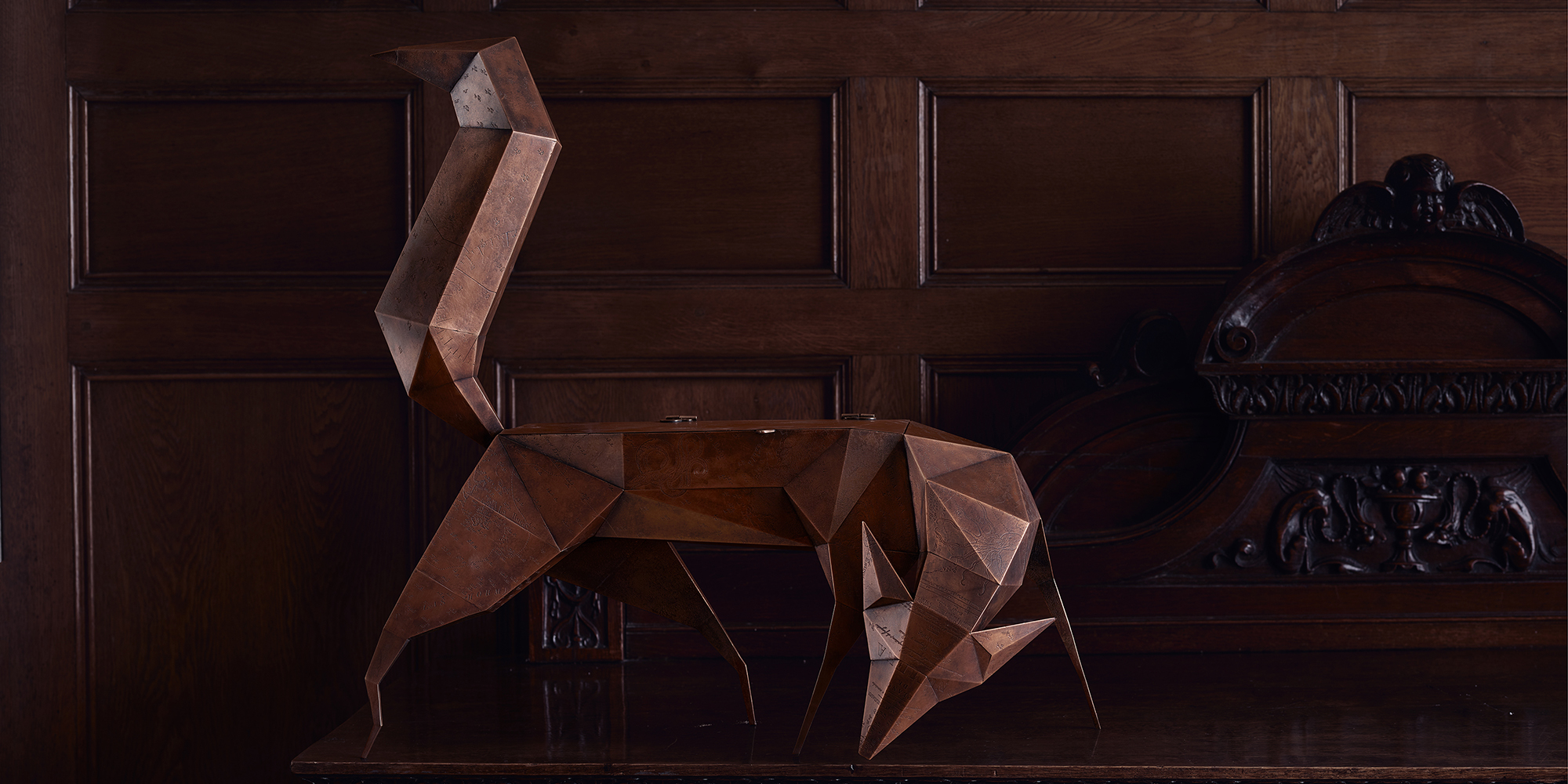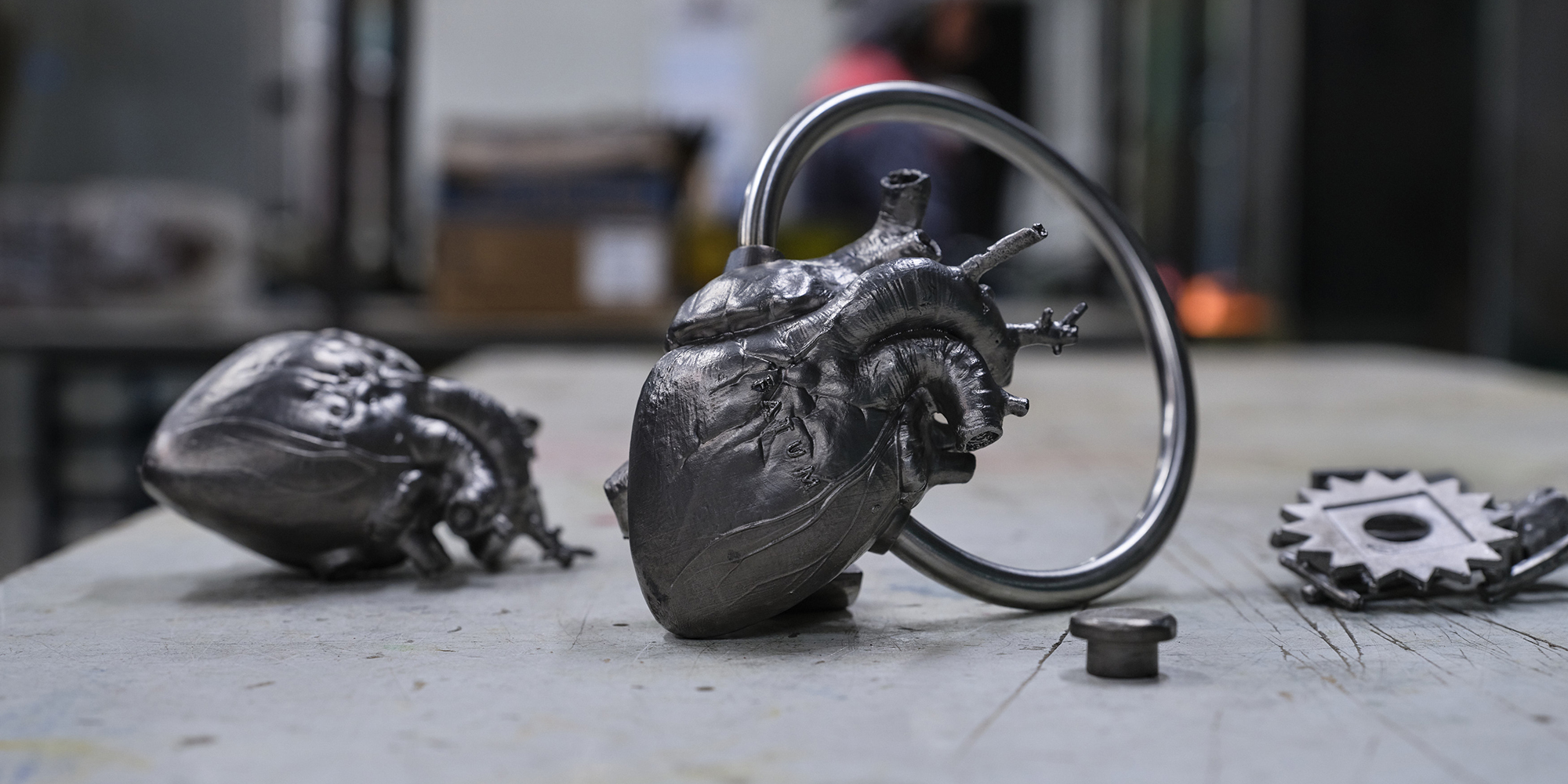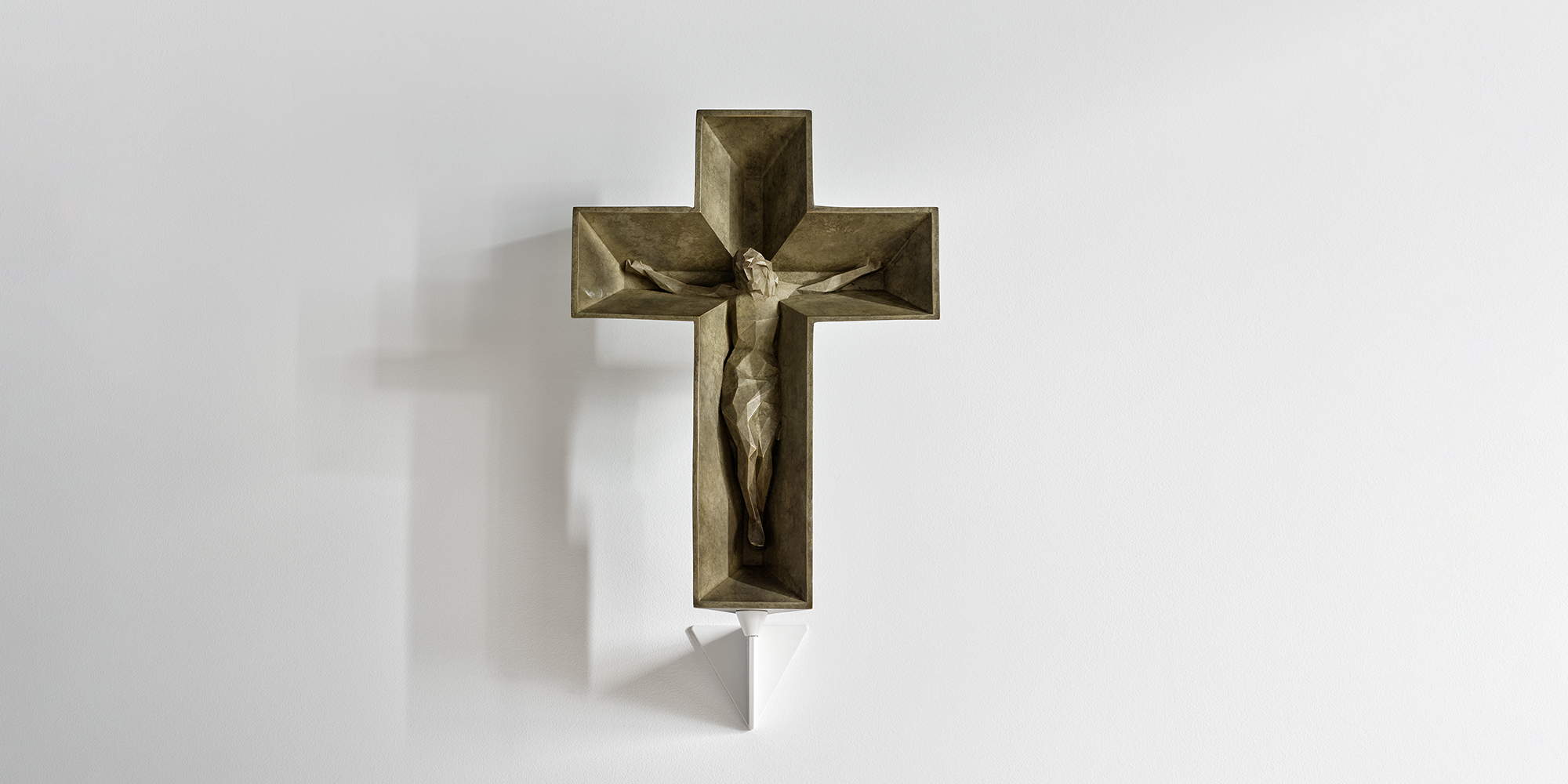“CERNUNNOS” DEER CONSOLE TABLE
Númena. Santos Bregaña & Javier Zunda. Eibar. 2018
Cernunnos was inspired by the thought of a wild animal, a deer, walking through the ruins of an abandoned city. It started with a sketch in a notebook, with the idea of a sacred animal but also a geometric object, rising from its own folded skin like bronze origami. Its skin is the night, with its stars, true and invented, and it emerges from mathematics to stand without apparent effort. It is a cupboard, a console table. Its stomach has doors and its interior is leather. Its door handles are birds; there is a section to keep keys in, and inside there is a secret compartment with a promise. The antlers are branches made of cast steel, a magnolia tree where you can hang your coats, hats and dreams.
Photo López de Zubiría
“VULPES” FOX JEWELLEY BOX
Númena. Santos Bregaña & Javier Zunda. Eibar. 2020
Vulpes is perhaps a vixen rather than a dog fox, as experts in these matters say that this posture is not that of a male animal, and it is more than possible that it is so. She scents the air, conscious of everything around her, sniffing and listening to all. She is heir to the same dream as her brother Cernunnos, and is ‘born of the same skin, in this case tattooed with a map where we have hidden the treasure’. It has a chest to store, for example, jewellery. A spherical steel mirror reminds us that the essential is invisible to the eyes. Its legs are made of steel and the inside of the chest is polished brass. Two cast butterflies make the hinges of the chest.
Photo López de Zubiría
“FATUM” DOOR KNOCKER
Númena. Santos Bregaña & Javier Zunda. Eibar. 2021
Originally, bronze or iron door knockers were made in the shape of a hoop or a ring. Who knows their origin? Design is for solving a problem, but the natural selection of animals and objects often causes unexpected transformations. Perhaps something intended for tying up a horse ended up serving as a knocker. We must also remember that an empty circle was the symbol of asylum. According to tradition, at the foundation of Rome Romulus built an asylum in the city, a place to welcome anyone who wanted to settle in the new city, and the asylum was an inviolable place. In the Middle Ages, churches and other places such as cemeteries and convents displayed an iron ring to indicate a place where a person accused of a crime could take refuge from the mob or the implacable justice of the powerful. If you touched the knocker with your hand you were safe from punishment. The simple ring is often a snake biting its tail, an emblem of eternal return, of circular time. Not for nothing do time and temple have a common etymology; at the blows of the door knocker, time stands still.
Photo López de Zubiría
CHRIST IMBRICATENS
Númena. Santos Bregaña. Eibar. 2024
…
If we could accelerate this sequence of representations, from the triumphans to the dolens, passing through the patiens, in a time that extends from the 5th century to the present day, in hundreds of thousands of representations, Christ would make a kind of dance from the static to the the pain. From the triumph over death to the resignation of the end before the resurrection.
In this proposal, a fourth form that does not renounce tradition, an imbricatens (superimposed) Christ: in the manner of Schrödinger’s well-known quantum superposition paradox, the son of God is alive and dead simultaneously. He present and absent at the same time, deceased and resurrected in parallel. The piece shows a cross with a figure that on one side is concave, alive and present and on the back it is convex and absent as a result.
A metaphysical Christ that on a contemporary support as a springboard allows it to be oriented in the room towards the center of the room for better visibility and to be placed in one direction or another depending on the light and the occasion. In the translucent version the superposition is even more evident as the images show.




























